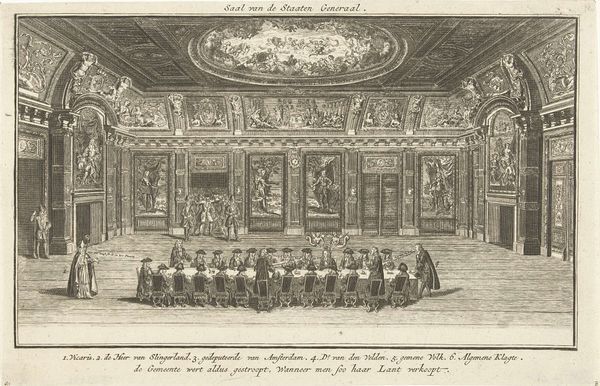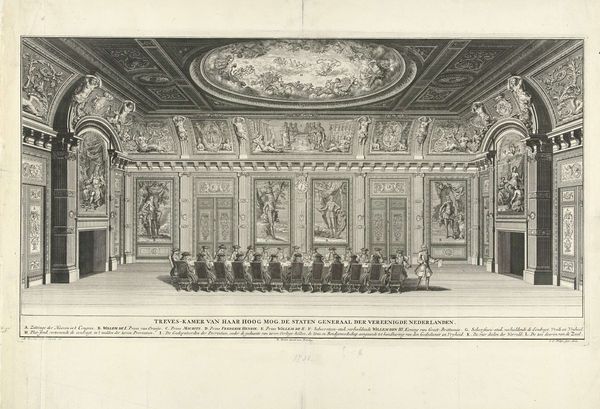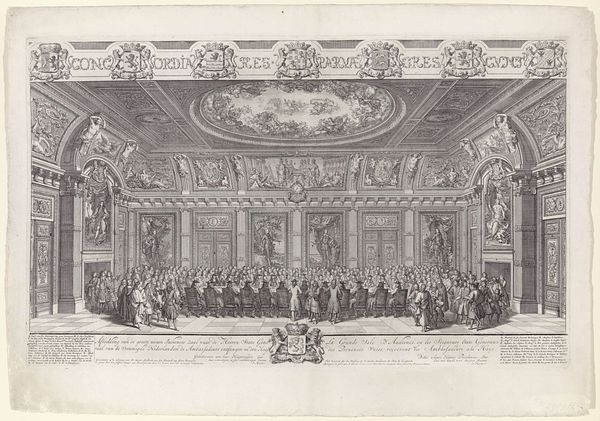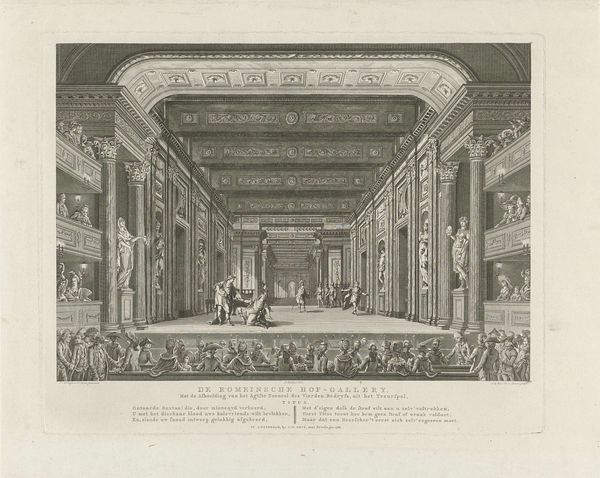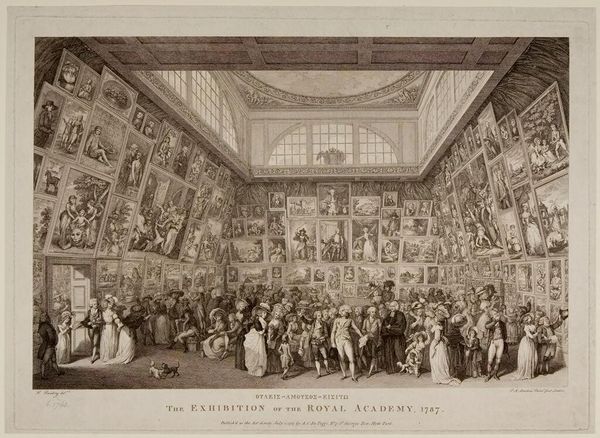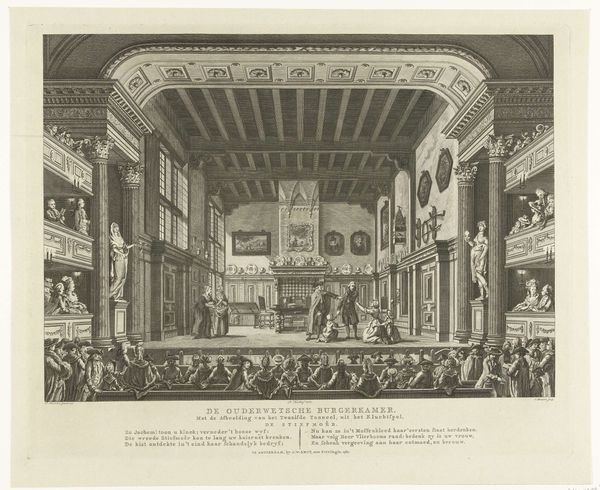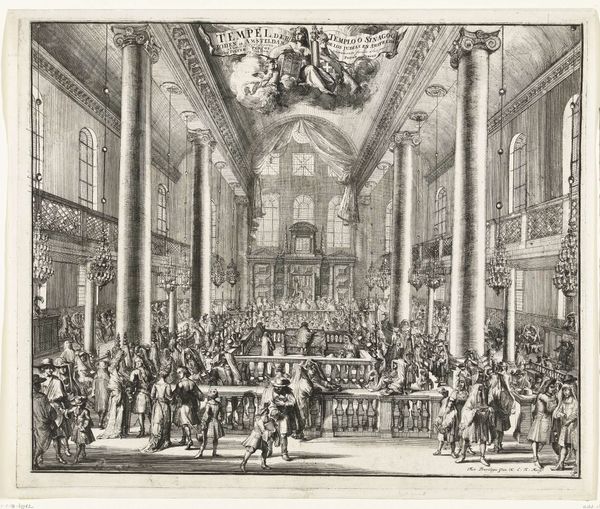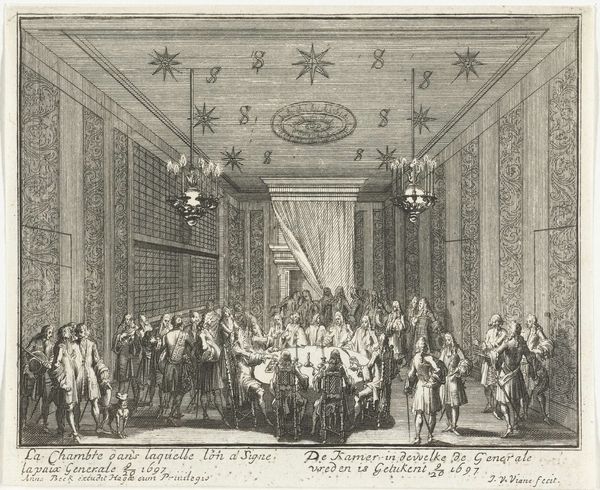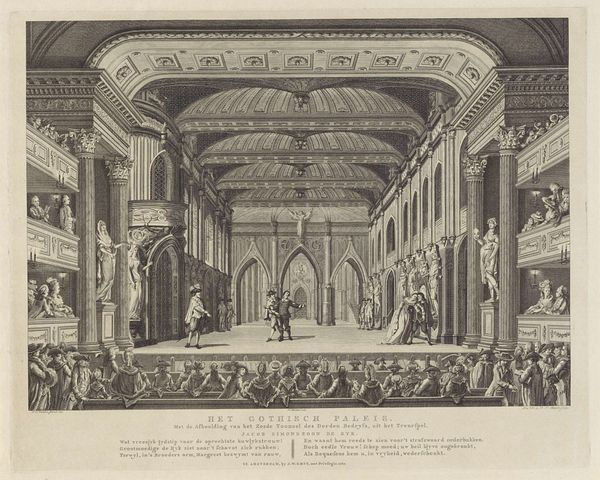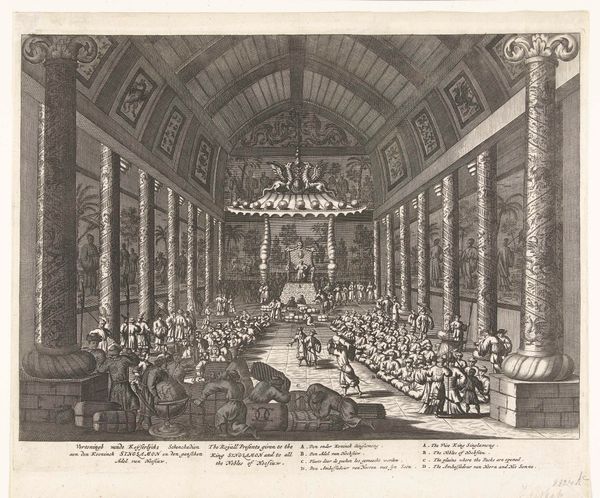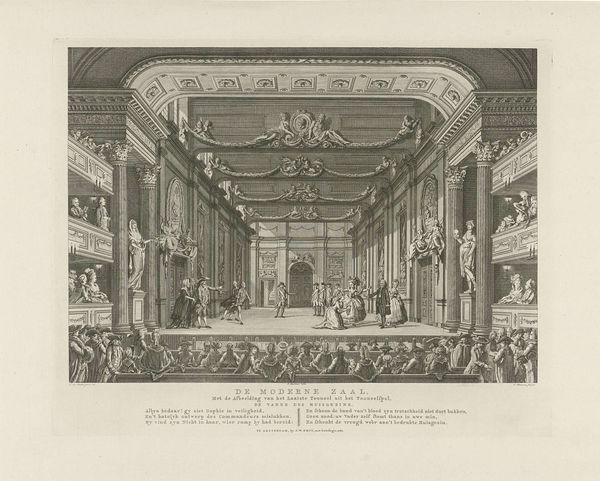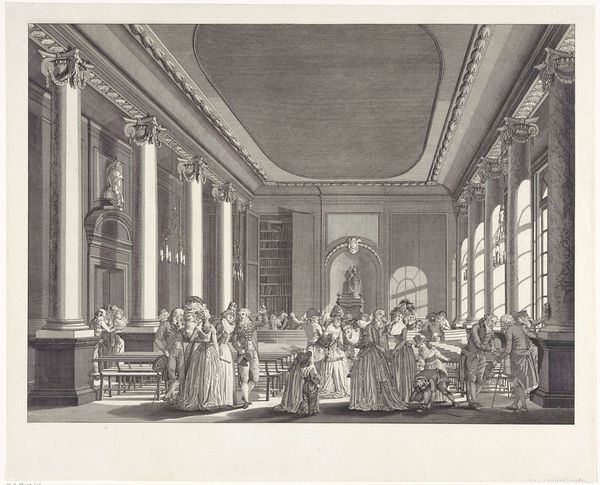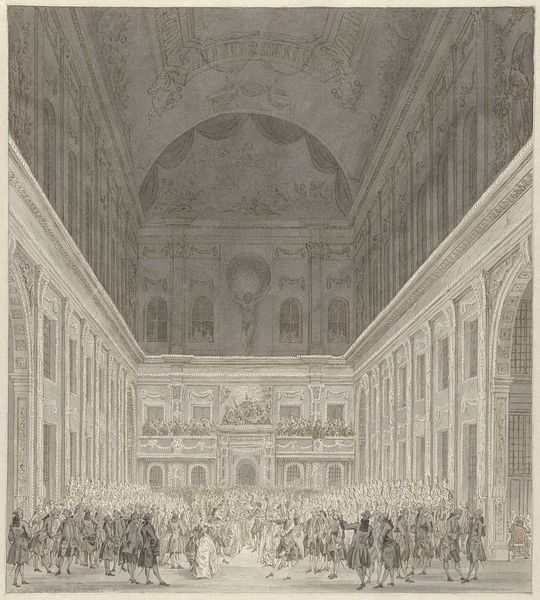
Vergaderkamer van de Staten van Holland en West-Friesland, ca. 1730 1730 - 1736
0:00
0:00
print, engraving, architecture
#
baroque
# print
#
architectural drawing
#
cityscape
#
genre-painting
#
engraving
#
architecture
Dimensions: height 698 mm, width 507 mm
Copyright: Rijks Museum: Open Domain
Curator: This print, "Vergaderkamer van de Staten van Holland en West-Friesland," made around 1730-1736 by Jan Caspar Philips, captures the meeting chamber of the States of Holland and West Friesland. It's a baroque interior scene rendered as an engraving. Editor: My immediate impression is one of intense order, and visual density. The composition, with its high vaulted ceilings and meticulous detail, creates a feeling of hierarchical power. There’s a structured rhythm in how the space is segmented, drawing my eye upward, emphasizing the architecture's grandiose design. Curator: Absolutely. But let’s also consider what this chamber represents. It's not just an interior, it's the seat of power for the Dutch Republic during a critical period. The placement of these figures, the visual emphasis on the architecture – they collectively reinforce the authority and social order of the Dutch ruling class. How are these visual strategies gendered and raced? How are those who were excluded from the benefits of governance, the non-elite, or the colonized subjects implicated here? Editor: The engraving medium itself, with its precise lines, reflects that desire for order, as do the decorations: allegorical scenes interspersed amongst the landscape panels. I see these features not merely as ornamentation but as carefully considered choices to enhance the viewing experience, guiding and controlling visual perspective, inviting one into a reading of structured logic. Curator: But look closer: that "structured logic" naturalizes very specific social and political dynamics. Philips, intentionally or not, is visually affirming the status quo. These are people in charge of the economic policies, in charge of trade, of the colonies... this image invites questions of who is represented and what economic systems made spaces such as this possible. Editor: While acknowledging the complex socio-political context, I still see merit in considering this as a fascinating study in Baroque spatial construction. It presents such layered ornamentation in its detailed ceiling work to its subtle play of light and shadow. How do you deny its architectural integrity? Curator: No, no denial of architectural integrity, only that its integrity is one enmeshed with its moment. These interiors facilitated policies impacting ordinary people of this country and abroad; such places should generate discomfort alongside whatever formal elegance we want to observe. Editor: So, we both seem to see the space operating, structurally. One to wield and to reinforce socio-political status; another through Baroque aesthetic articulation. It is such historical considerations that inform its meaning, for better or worse. Curator: I couldn’t agree more, what such an image conveys about class, capital and colonial exploitation can often be obscured within that visual experience, which is all the more reason why it remains a relevant space of inquiry.
Comments
No comments
Be the first to comment and join the conversation on the ultimate creative platform.

